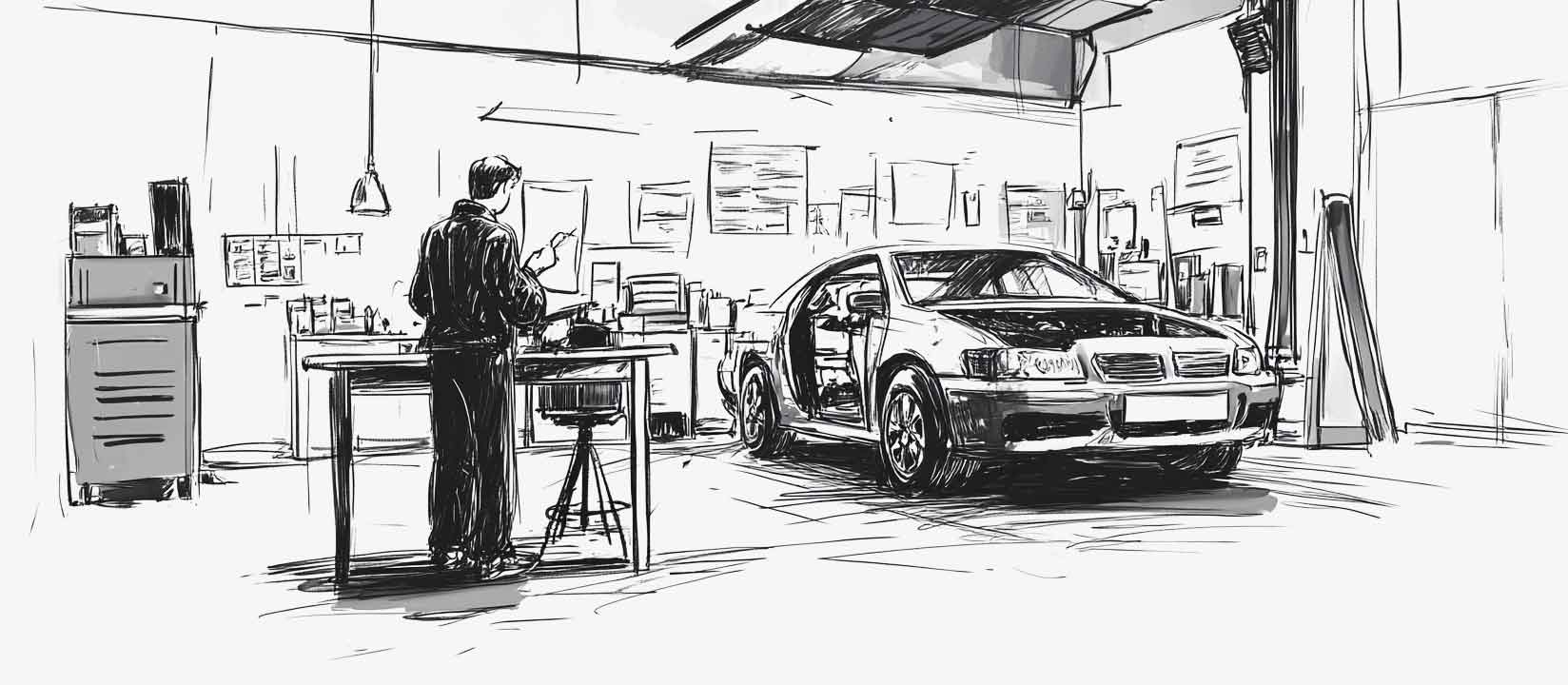Ever wondered why banks sleep soundly while your auto repair shop suffers from payment anxiety? Simple: they’ve mastered the dark art of predicting who will actually pay.
Good news—you can steal their techniques.

“Is this even going to be paid for?”
The Problem: Schrödinger’s Payment
You’ve got six vehicles in your service bay. Parts ordered, labor scheduled, but the critical question remains: will all these customers pay promptly when the work is done? Until they do, each invoice exists in a quantum state of both “definitely getting paid” and “absolutely hopeless.”
This uncertainty isn’t just annoying—it’s financially dangerous. It leads to:
- Cash flow forecasts with the accuracy of a carnival fortune teller
- Inventory decisions based on hope rather than data
- Stress levels that would concern medical professionals
Banking Wisdom for Grease Monkeys
Lenders have solved this problem through systematic risk assessment. Here’s how to adapt their approach for your repair shop:
1. Basic Payment History Scoring
Start simple: create a three-tier classification system for existing customers:
- Green: Pays promptly, never disputes charges (your financial angels)
- Yellow: Pays eventually, sometimes negotiates after work is done
- Red: History of disputes, delayed payments, or mysterious disappearances
For new customers, begin with yellow and adjust based on behavior.
2. Pre-Work Qualification
Before significant repairs, implement these lending-inspired techniques:
- Deposit requirements: Scale based on job size and customer history
- Credit card pre-authorization: The automotive equivalent of a credit check
- Payment plan documentation: For larger repairs, establish terms before work begins
3. External Signals Assessment
Banks look beyond direct history. You can too:
- Vehicle value vs. repair cost ratio: If the repair exceeds 60% of vehicle value, payment risk increases dramatically
- Customer stability indicators: Local homeowners with steady jobs are statistically more likely to pay than temporary residents
- Communication patterns: Customers who are difficult to reach or vague about details represent higher risk
Implementation: A Simple Scoring System
Create a basic 10-point system where customers start at 5 points. Add or subtract based on:
- Prior payment history (+3/-3)
- Deposit provided (+2)
- Repair-to-vehicle value ratio (-1 for every 20% above 50%)
- Local property owner (+1)
- Communication clarity (+1/-1)
8-10 points = Green (96% payment probability) 5-7 points = Yellow (82% payment probability) 1-4 points = Red (60% payment probability)
Strategic Responses to Scores
Different risk levels require different approaches:
- Green: Standard payment terms, priority scheduling
- Yellow: Deposits required, clear payment terms documentation
- Red: Higher deposits, phased approval for work, pre-authorized payments
The Financial Impact
By implementing even a basic version of this system, you can:
- Predict cash flow with significantly improved accuracy
- Make informed inventory and staffing decisions
- Identify which jobs actually contribute to profitability
The Bottom Line
Banks don’t extend credit based on good feelings or optimism—they use systems. Your auto shop deserves the same protection. Because while fixing engines might be your passion, getting paid should be a certainty.
Remember: hope is not a financial strategy. Systematic payment prediction is.
Try to use Forecast App to evaluate posibilities of forecasting.